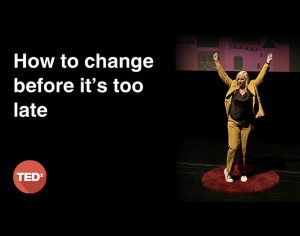Image courtesy of Wayra
The insistent hype around accelerators means it’s easy to forget they are a phenomenon with a significant heritage. “The accelerator movement itself really span out of the university incubators,” explains Tristan Watson, programme manager of ignite100. He points to the mentoring of Hewlett Packard in the 1950s by Frederick Terman, then dean of engineering and provost at Stanford University, who encouraged students to branch out and start their own companies. This support would lead to the creation of the world’s biggest tech ecosystem and eventually earn him the moniker of ‘the father of Silicon Valley’.
Whilst accelerators might have their roots in these older incubators, they tend to focus less on long-term relationships and more on getting early-stage start-ups ready for business as quickly as possible. “Accelerators help start-ups to succeed, avoid common pitfalls and begin to build their business so it’s more ready to scale,” explains Ian Merricks, founder of Accelerator Academy. This is achieved by providing access to mentoring, workspace and seed capital, in exchange for a small amount of equity. “We take equity in these businesses and so our return is when the businesses are able to deliver on the success that they’re hoping for.”
The emergence of this modern form of accelerator has been a recent phenomenon. “It was organisations like Y Combinator in the States that, in the last ten years, really invented that model,” Watson explains. Launched in 2005, Y Combinator helped bring together best practice and mentoring to take the risk out of digital start-ups. “It had some very quick successes in terms of the number of successful companies leaving these programmes so investors round the world wanted to start backing and supporting accelerator programmes,” says Watson.
With Y Combinator seeding the likes of Dropbox, Disqus and Airbnb, it wasn’t long before other incubators joined the fray. Tech Stars followed hot on its tail in 2007 and Seedcamp became the first overseas accelerator when it set up in London the same year. Rapidly more began to arrive on the scene, both in the US, the UK and in many other countries around the world.
This boom in accelerators isn’t hard to explain. “It’s driven by the growth of start-ups generally,” comments Merricks. Increasing economic instability, the reducing cost of producing technology and tax incentive schemes have seen the number of start-ups in the UK soar. “Those three things combined create a perfect storm, which is why we had 525,000 start-ups created last year alone,” he continues. “With these huge numbers, a system of support, infrastructure and an ecosystem springs up around it.”
However, quite how quickly the accelerator phenomenon has sprung up has taken a few people aback. “In some format or other, support for early stage businesses has been around for a considerable time,” says Simon Devonshire, director of Wayra Europe, the O2 Telefonica accelerator. But the raw clay these services are working with has changed radically, with the computing power, connectivity and virality most start-ups have access to having increased exponentially. “What’s changed is the intensity with which they do what they do and of the environment in which they’re operating.”
It’s certainly true that more start-ups are joining accelerator schemes than ever before. But what stage they’re really ready to join a programme is a matter of some debate, with more plumping for later stage start-ups as the movement matures. “When accelerators started, they aimed for pretty early stage businesses,” says Peter van Sabben, global marketing manager of Startupbootcamp, the pan-European accelerator. “The start-up would have a product and a team of two or three people but its position wouldn’t have been validated yet.”
Admitting a change in perspective, Devonshire explains that in his early years at Wayra he preferred a relatively blank slate. “Now I’m more pointed towards businesses that are a little longer established and have already created a minimum viable product with market validation,” he says. He says that although it can be harder to add value to more established start-ups, when one does identify key improvements it can significantly boost that enterprise’s chances of success. “Although it can be in many ways more challenging it’s arguably more rewarding.”

Image courtesy of Wayra
But for a start-up, deciding to join an accelerator isn’t just about identifying whether they’re ready. It’s also important to identify the programmes that are really going to help it boost its business. “It’s not about finding the best scheme: it’s about finding the one that’s right for them,” explains Watson. “Start-ups are always told that when taking investment, it’s as much about them finding the investor that’s right for them as it is the other way round. And it’s exactly the same with accelerator programmes.”
All of the accelerators advise carrying out the same due diligence with which one would approach any form of investment or financial agreement. “Take references from past alumni,” recommends Merricks. Accelerators will be happy to put start-ups in contact with past alumni to help them ascertain whether the programme is the right fit. “Some of the applicants will go and take up informal references or will go and hustle their way into speaking to alumni,” he says. “I actually really like that; it shows an entrepreneurial mindset.”
For start-ups that have secured a place on an accelerator scheme, things tend to follow a fairly set formula. The first period will be focused on spending time with a variety of mentors going over their business model. “The idea is to pull it all apart, see which bits are really interesting and then put it back together again,” Watson says. After this, start-ups will begin to work with specific mentors to grow and develop the business along these lines.
However, finding the right mentor isn’t always so straightforward. “The problem with some mentors is that just because something happened five or ten years ago in the industry doesn’t mean it still happens today,” says van Sabben. Often finding the best fit in a mentor means accurately identifying how much they’re going to be able to relate to the unique circumstances of your start-up. He continues: “We teach the start-ups to listen to the mentors, find what they think is interesting about them but first have a look at what kind of person they are.”
Devonshire thinks there’s nothing wrong with going for the big names, if that’s going to work for your start-up. “If you want Bill Gates, aim high because it might be that we could put a call in,” he says. But he caveats this by explaining that the best mentors aren’t always the household names: at one of Wayra’s mentor networking events a relatively unknown FTSE 100 executive blew the start-ups away and was picked by 11 teams. “Nobody had heard of him and nor would I have expected them to,” he says. “But what he talks about and how he talks about it was seen to be massively compelling by a large number of the companies.”
But over-focusing on what mentors can offer risks missing one of the greatest assets at the start-ups’ disposal. “The thing that is not commonly recognised until they’ve experienced acceleration is the biggest positive impact on their development is one another,” Devonshire explains. “What they learn and get from their peer group is invariably the most important aspect of all.”
Bundling a number of highly talented tech teams into a co-working space doesn’t just serve the function of saving a bit of cash on rent – allowing start-ups to rub shoulders increases their ability to pick up best practice from each other. “How to do growth hacking, create a business model canvas, talk to potential clients,” van Sabben says. “That’s all stuff you can learn from your peers.”

Image courtesy of Wayra
Cross-pollination doesn’t just come in the form of ideas either. Often the accelerator environment lays the ground for start-ups’ first networks, providing a potential basis for collaboration and networking. “Some of our past alumni still have their offices here and will become the clients of companies that go through the accelerator,” Watson explains. And, given that not every start-up will always succeed, the collaborative environment allows talent to be absorbed by other enterprises. “Quite often you will find a really smart team whose idea didn’t work out basically being headhunted by one of the more established companies,” he continues.
Finally, when the start-ups have navigated their way through the programme and have qualified, collaborated, coded and nigh-on collapsed, the final culmination of all of their efforts is demo day. The start-ups are brought in front of an audience of investors, required to deliver short pitches and actively court investment. “If I were to summarise everything we do, it’s making start-ups investor-ready – the test of that is to put them in front of a load of investors and get them to ask for investment,” says Devonshire. “That is the demo day.”
There are conflicting opinions about the efficacy of demo days. Ignite100 has questioned whether the demo day offers the best deal for the investor in constraining their experience of the start-ups’ journeys to such a brief window and is currently trialling a different approach where investors are introduced into the programme much earlier through a series of investor lunches. Watson explains: “Investors are really happy to see a company grow, change, improve their numbers and then invest when it feels right for them, rather than just being introduced to them at the end.”
Some also feel that too much focus can be placed on delivering a polished pitch, rather than really making sure a start-up is genuinely investment ready. “Whilst there’s a role for some pitch practice, what I don’t like is accelerators that just focus on teaching entrepreneurs to say the right thing,” says Merricks. By way of contrast, he explains that Accelerator Academy focuses on helping start-ups really hone things like market fit and commercial traction so that they’re already prepared for anything an investor might throw at them. He continues: “At the end of the programme, the company is naturally ready for investment because they’ve got their research to support their business assumptions.”
However, it can’t be denied that going through investment rounds is a huge part of the start-up journey and building a familiarity with the standard pitching structure is going to be vital for any enterprise to be genuinely ready for sustained growth. Devonshire explains: “It’s the acid test: ‘can you succinctly, powerfully and in a compelling way articulate what your business is all about to the extent that somebody is going to want to invest in its growth?’”
But what’s the long-term goal? Is it all about finding a unicorn and having a stake in the next Facebook, Twitter or WhatsApp? “The opportunity that the digital economy represents is that of exponential growth,” comments Devonshire. Whilst there are no guarantees, any start-up could potentially become the next big disruptor that will turn the tech space upside-down. “They all have a lot of potential for growth and scaleability and in some cases they have that multi-billion, exponential growth opportunity.”
Motoring ahead
GoCarShare – Wayra

The idea for GoCarShare, the car-sharing platform, first popped into founder Drummond Gilbert’s head on a miserable wet day on the streets of west London. “I couldn’t help notice that all the cars had one person in and that everyone looked pretty unhappy,” he explains. “That’s where the opportunity for GoCarShare presented itself.”
However, whilst getting the initial idea off the ground was relatively straightforward, GoCarShare began to recognise it needed help rounding out its team and finding a route to monetisation. A place on the Wayra accelerator programme seemed like the perfect solution.
Once it had successfully got a place on the scheme, the hard work began, as Gilbert relays. “It was intense and at times very pressured, with fortnightly peer reviews and one-to-one sessions with the Wayra team.”
However, the experience was also an intensely enjoyable one, introducing them to mentors including Martha Lane Fox, the CEO of UBER, and an ex-Apple mobile app expert, as well as shaping the company as it is today. “It enabled us to pull a team together and we formed a board with senior experience from TfL, News International and major telcos,” he says. Additionally, the close relationship with O2 has led the corporation to license the app to help reduce their parking costs and cut carbon. He concludes: “It’s been very positive for us.”
On form
Formisimo – Seedcamp

Formisimo, the form analytics start-up, first sprang from a rather startling statistic that Al Mackin, the company’s co-founder, came across at a digital marketing conference: around 80% of users who begin to fill in a web form abandon it because of unnecessary complexity or errors. He explains: “Co-founder Tom New and I realised that there wasn’t an analytics solution on the market to help companies identify and address this issue, so in 2013 we developed Formisimo.”
It’s good for start-ups to have a proof of concept before entering into an accelerator programme and the Formisimo team certainly had that. “After a thorough testing phase, in which nearly 500 companies used the tool, Formisimo went to beta in May 2013,” Mackin says.
By January 2014, it had already effectively monetised and investment offers had begun to flood in, which inevitably stood the start-up in very good stead when it applied for a place on Seedcamp’s accelerator programme. Mackin says: “Formisimo was selected from a pool of more than a thousand applicants after an intensive five-day mentoring programme.”
And whilst the start-up was hardly lacking in interest pre-acceleration, Seedcamp’s programme has had a pronounced effect on its profile. “It was an intense experience, but it has had a dramatic impact on us,” Mackin comments. Getting mentoring from household names like Google, OneFineStay and MOO has put the enterprise in an excellent position to negotiate investment and continue to grow. “It’s amazing how a few words from the right person at the right time can help your business take off.” ![]()
Share via:


















































